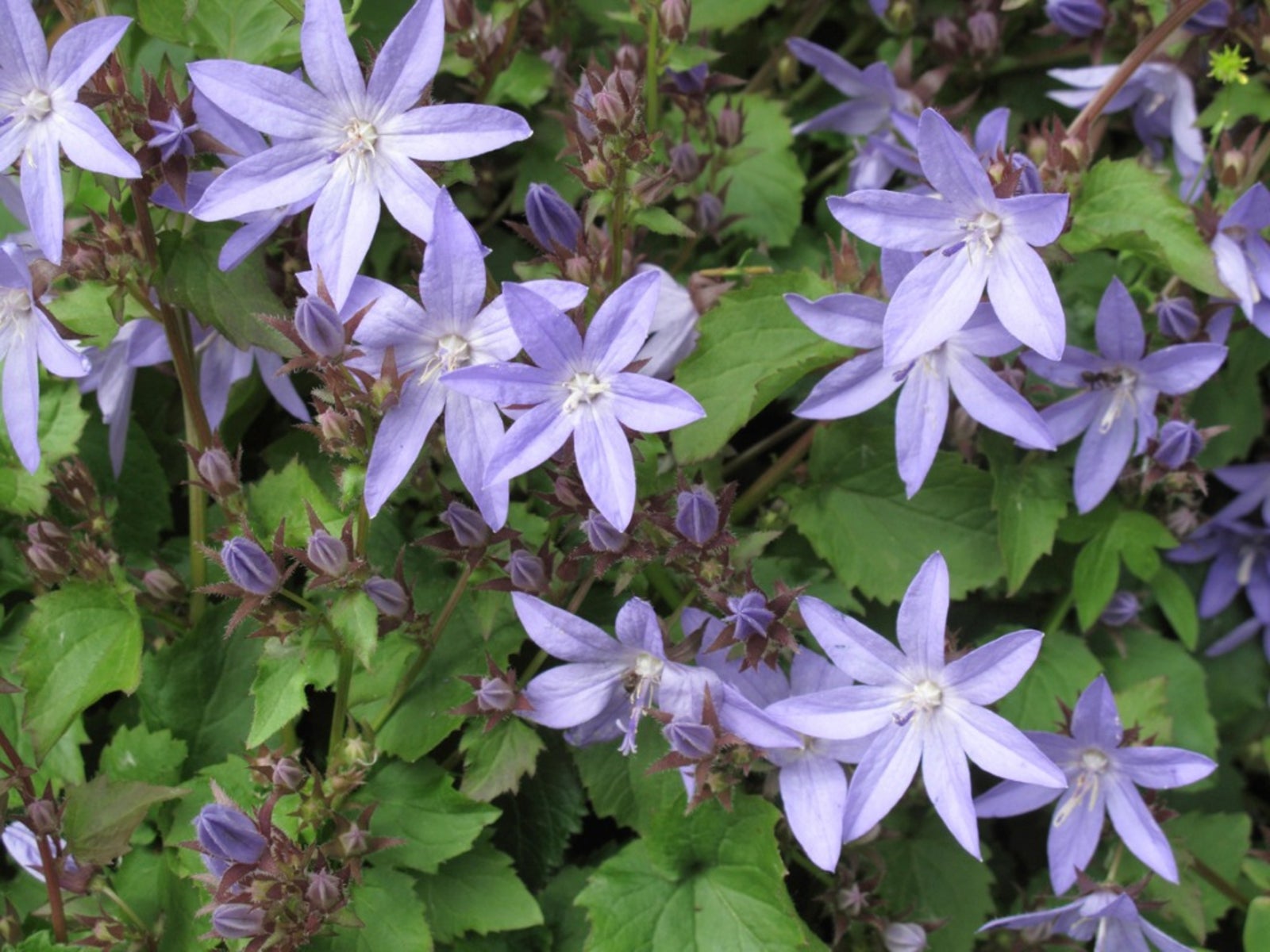Serbian Bellflower Care: Tips On Growing Serbian Bellflowers


Serbian bellflower plants (Campanula poscharskyana) are a great way to add long-lasting color to the home landscape. Serbian bellflower care is minimal and the occasional pruning needed to keep the bushes tidy is worthwhile when you consider that the blooms last from late spring to fall. You'll find this member of the Campanula family is one of the easiest to grow.
How to Grow Serbian Bellflower
Serbian bellflower information indicates the 1 inch (2.5 cm.) flowers grow in shades of blues and purples. Flowers of Serbian bellflower plants are thick on each bunch and star-shaped, making an attractive groundcover option.
The Serbian bellflower plant is easy to get started in spring. Plant seeds or take basal cuttings from existing plants. You may find already growing Serbian bellflowers at your local nursery in small six-packs. This is an excellent option when starting Serbian bellflower plants because you likely won't be satisfied with just one.
When growing Serbian bellflowers from seed, you may start them outside in a cold frame or indoors in containers in late winter to get a jump on early spring blooms. This creeping perennial plant spreads quickly once transplanted into beds and borders.
Serbian bellflower plants remain short, growing to under a foot (0.5 m.) in height, but will spread quickly to 3 feet (1 m.) across. Allow room between seedlings for the abundant spread of developing rhizomes. While the plant spreads quickly, it is not considered invasive.
When growing Serbian bellflowers, choose a spot in full sun to partial shade. Consider growing Serbian bellflower in rock gardens, as edging plants for beds or mass plantings within difficult areas.
Soil should be well-draining, but not necessarily rich or loamy. Keep soil moist. Foliage is evergreen in warmer areas and dies back in colder climates in USDA Hardiness Zones 4-7.
Sign up for the Gardening Know How newsletter today and receive a free copy of our e-book "How to Grow Delicious Tomatoes".
Care of Growing Serbian Bellflowers
According to Serbian bellflower information, the division of already growing Siberian bellflowers is a great way to prevent overcrowding and get more plants for your yard and garden. Serbian bellflower care involves pruning plants back to basal leaves when the bloom season is over.
When learning how to grow Serbian bellflower, you may have to deal with pests such as spider mites and aphids. Try using a homemade or commercial soap spray, paying special attention to the underside of the leaves, before resorting to pest control chemicals.

Becca Badgett was a regular contributor to Gardening Know How for ten years. Co-author of the book How to Grow an EMERGENCY Garden, Becca specializes in succulent and cactus gardening.